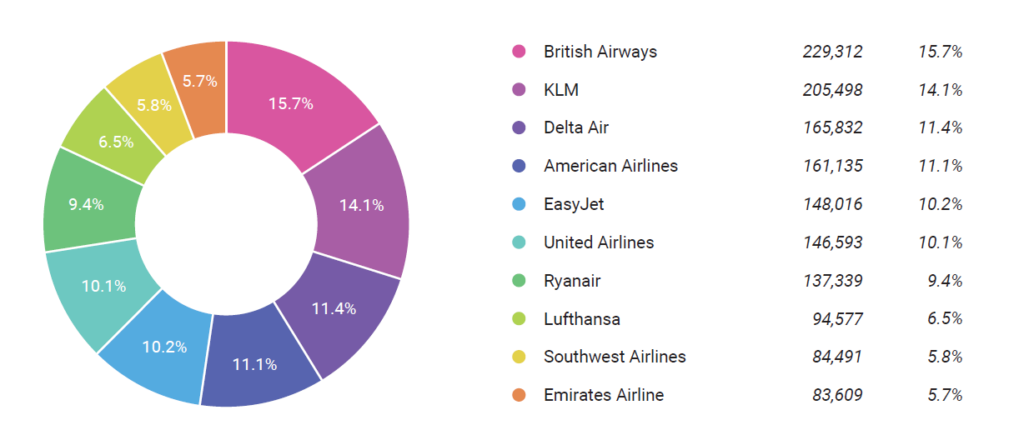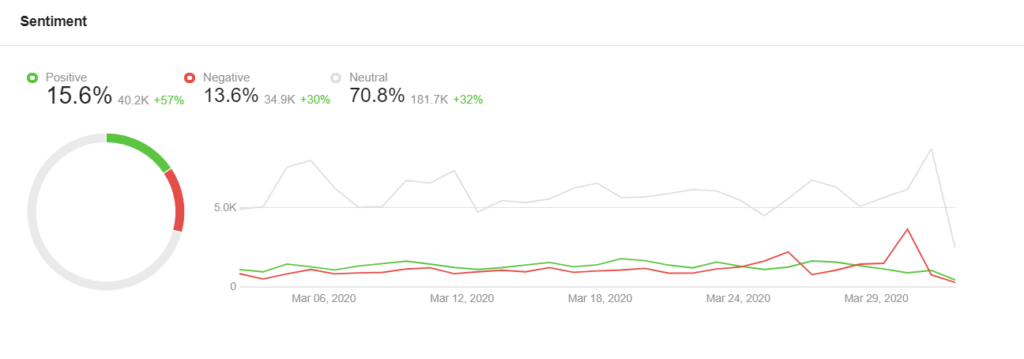30-second summary:
- Brand health is an umbrella term for metrics that shows you how well your brand is doing.
- These metrics include – Net promoter score, share of voice, brand reputation, unprompted brand recall, prompted brand recall, purchase intent, and brand equity.
- Founder and CMO at SEO PowerSuite and Awario, Aleh Barysevich, walks you through the calculations for each of the metrics.
- There are three common ways to measure brand health – focus groups, questionnaires, and social listening tools.
Brand health is a collection of metrics that shows how much your branding contributes to achieving your goals. It applies equally to multinational corporations and tiny new Instagram businesses: no matter the size of your company, your clients are either affected by your branding, or they aren’t, or they are affected to some extent. Knowing the details of your brand health will help you see the strengths and weaknesses of your branding, and help you decide on the future actions regarding it.
In this article, we’ll go through the metrics that determine brand health.
Each of the metrics is important in its own way and reveals a different aspect of brand health. It may be that your brand awareness is superb, but the purchase intent is suffering. It might be that your customers love your brand, but the overall brand reputation is not that good (perhaps, there was a reputation crisis some time ago). Unless you look at each metric closely and calculate the numbers behind the vague concepts such as “brand awareness” and “brand reputation”, you’ll never know what’s hurting and what’s benefiting your sales when it comes to branding.
So let’s dive into calculations.
1. Net promoter score (NPS)
Net Promoter Score is calculated based on your customers’ responses to the following question:
How likely is it that you would recommend our company/product/service to a friend or colleague?
The scoring is most often based on a 0 to 10 scale. The responders are then grouped into three categories:
- Promoters (score 9-10) are loyal customers that spread the word about your brand.
- Passives (score 7-8) are satisfied customers that don’t promote your brand and are vulnerable to competitive offerings.
- Detractors (score 0-6) are unhappy customers who can damage your brand reputation.
To calculate your NPS, subtract the percentage of detractors from the percentage of promoters.
The results could be from -100 (if every customer is a “Detractor”) to +100 (if every customer is a “Promoter”), therefore, a positive NPS is considered a good result. However, the score should be 50 and more to clearly show that the word of mouth is working for you.
Companies are also encouraged to ask follow-up questions to reveal the reasons behind the scores they get.
2. Share of voice
One important brand health metric is brand awareness. To know if your branding is working, you have to discover how much people talk about your brand, if at all. However, the number is ambiguous on its own. You might discover that people talk very little about your brand of toilet paper. Is it due to the unpopularity of your brand, or is it because people generally don’t talk about toilet paper? It’s hard to tell. That’s why you need to factor in a share of voice metrics.
Share of voice shows how much your brand is dominating the conversation compared to other brands in your niche.

To calculate the share of voice, all you need is a good social listening tool like Awario or Brandwatch (full disclosure these are my tools). Once you create an alert for your brand and your competitors, a social listening tool will go through conversations on social media networks, news sites, blogs, forums, review sites, and the web and calculate the percentage of conversation that’s dominated by your brand. As the tool will also calculate the percentage of conversation dominated by each of your competitors, you can then dig deeper to analyze what the successful competitors are doing better in terms of branding.
3. Brand reputation
While we’re on the subject of social listening tools, let’s talk about the third most important metric – brand reputation. While it’s important that people talk about the brand and that the customers are satisfied and willing to recommend your product, it’s also vital to know how the audience perceives your brand in general.
In our age of instant information, the news about brands travels fast and far, building the reputation and creating problems that the company could not be aware of.
Social listening tools usually have a built-in feature. To perform sentiment analysis, create an alert for your brand. The tool will analyze band mentions on social media networks, news sites, blogs, forums, review sites, and the web to discover brand sentiment: the percentage of good, bad, and neutral mentions around the brand over time.

You can look at spikes of negative mentions to spot reputation crises (and attend to issues that have caused it), and look through positive mentions to get positive user feedback.
For the overall idea of brand health, you might want to calculate a sentiment score. To do that, exclude neutral mentions altogether, and calculate the percentage of positive mentions.
Alternatively, you can calculate the net sentiment score. Simply exclude neutral mentions and use the formula:
Net Sentiment = (% of Positive Mentions – % of Negative Mentions) / (% of Positive Mentions + % of Negative Mentions).
4. Unprompted brand recall
Unprompted brand recall is a measure of how many people think about your brand when asked to think about your industry.
Unprompted brand recall is a metric that usually works well for the most popular brands. However, it’s worth striving for unprompted brand recall, even if you’re far off at the moment.
To calculate the metric, ask participants the following question:
“Thinking about [industry], what’s the first brand that comes to mind?”
Then sum up all participants who named your brand. Divide this number by the total number of people asked and multiply it by 100 to get a percentage score.
5. Prompted brand recall
While big brands will probably be more successful in the first category, this one gives the opportunity for smaller brands to once again assess their brand awareness and/or purchase intent. It also includes a single question that can change depending on whether you’re interested in further metrics on brand awareness or purchase intent:
Please tick all the [industry] brands that you’ve heard of / Please tick all the [industry] brands you would consider buying [product] from.
Then, you list your brand along with your competitors’ brands and see which ones the participants will pick. A low score on this metric is definitely a bad sign.
6. Purchase intent
Purchase intent shows how likely are people to go from knowing your brand to buying your products. As many other metrics in this article, this one requires a place in a questionnaire.
The calculation is very straightforward, ask participants the following question:
“Based on what you know about [brand], how likely are you to buy from them?”
Measure the results on a Likert scale. Sum up the number of people who answered “very likely” and divide it by the total number of people asked to get a Purchase Intent score.
7. Brand equity
Brand equity is the result of combining two metrics from this list. When looking at the overall brand health, brand equity is something that companies pay the most attention to.
First, you calculate what’s known as Brand Strength. This is a measure that combines the net promoter score and purchase intent.
The formula looks like that:
Brand Strength = (Purchase Intent + NPS) x 100.
The result is then multiplied by the figure of the Unprompted Brand Recall:
Brand Equity = (Brand Strength x Unprompted Recall) x 100.
Organize your results
Use a good old Excel sheet to organize your data. Look at the low numbers and dig deeper into the areas of your branding that are falling behind. Turn to competitor research when you’re out of your own ideas for improvement. Or maybe before you get to that state.
Wrap-up
Let’s sum up what you’ll need for measuring brand health metrics.
- Focus groups
- Questionnaires
- A social listening tool
This is a shortlist for measuring something as huge and as important as brand health. Don’t put this off – the sooner you start measuring your results, the sooner you’ll know how to improve your branding and increase sales.
Aleh Barysevich is Founder and CMO at SEO PowerSuite and Awario.
The post Seven brand health metrics and how to measure them appeared first on Search Engine Watch.
from Search Engine Watch https://ift.tt/3g0fEXZ
Comments
Post a Comment